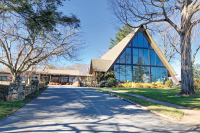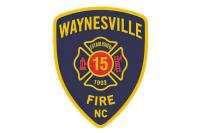Industrial landfills: A better way
 The dangers of coal ash have taken center stage in North Carolina in the wake of the Dan River disaster, when a breach in a faulty Duke Energy coal ash pond near Eden unleashed a toxic slurry downstream.
The dangers of coal ash have taken center stage in North Carolina in the wake of the Dan River disaster, when a breach in a faulty Duke Energy coal ash pond near Eden unleashed a toxic slurry downstream.
Finger-pointing broke out at the highest levels of state government, along with heated debate over who was at fault for the breakdown in oversight. Coal ash impoundments statewide were portrayed as ticking time bombs, with more environmental catastrophes imminent if something wasn’t done.
But all the while, at the far western edge of the state, Evergreen paper mill in Canton has been a model of how to do it right.
The coal-fired boilers of the mill produce a huge volume of coal ash. Unlike the open pits and storage ponds decried as subpar, all of Evergreen’s coal ash is tucked into a lined landfill, heralded for its state-of-the-art design and high-caliber engineering.
Water is the nemesis of any landfill. Every drop that falls on the landfill must be captured without escaping out the sides or bottom. Landfills, including Evergreen’s, start as shallow bowls excavated into the earth. As the mountain of waste grows higher and higher, the edge must stay within the lined bowl — like an inverted teacup on a saucer.
“Landfills are basically bathtubs,” explained Allen Gaither, a landfill design specialist with the N.C. Department of Environment and Natural Resources in Asheville.
Related Items
But every bathtub needs a drain. Enter the leachate collection system.
“They don’t want a pond sitting on the lining because there is a lot of force there already,” explained Andrea Keller, also a landfill specialist with DENR in Asheville.
Water that collects in the bottom is pumped out into collection ponds, and then sent back to the mill’s wastewater treatment plant.
To promote drainage, porous material — gravel, sand or even rubber chips — is layered on top of the lining, and “one thing unique to this landfill as well is they have vertical drainage,” Keller said.
Known as “chimney drains,” vertical columns of gravel run like seams through the waste pile to help collect, concentrate and channel the water to the bottom.
“They are creating as many pathways as possible for the leachate to flow to the bottom. They use a tremendous amount of gravel in order to get the flow they want,” Keller said.
A few types of waste come in to the Evergreen landfill — not just coal ash. Getting it layered in right is a finely honed science, Keller said. A conductor oversees the constant parade of trucks coming and going from the landfill.
“How to pack it, where they need to pack it, what waste goes where, what the next load should be and where to put it,” Keller said. “It is pretty amazing to watch.”
Waste types are mixed — the liquidy industrial sludge with the drier coal ash — to create the right consistency.
Despite the safeguards built in to the design to stop contaminant transport, the landfill is routinely monitored around its perimeter for groundwater contamination and methane migration.
Samples are taken of leachate as well and used as a baseline for what red flags to look for in the groundwater monitoring.
“It is getting a snapshot of what constituents are in the leachate. If you are trying to match a reading on a well you would know what is coming from the landfill,” Keller explained.
Overbuilt
Evergreen’s current landfill sits on a 244-acre tract. It has been in use for 30 years, and has at least 20 to 25 years of life left, based on the current pace of disposal. If the mill converts from coal to natural gas as planned and coal ash is no longer part of the waste stream, the life will increase substantially.
The site is divvied up in sections known as cells. Evergreen has recently gone through the permitting process for a new cell at the landfill. The cell it’s currently using has been filling up faster than expected. It was designed with a five-year capacity in mind, but that was based on production volume coming off the recession.
“The economy picked up and they started producing more product, so now it will only last them 3.5 years,” Gaither said.
The new landfill cell was designed by Sevee Maher, a national engineering firm that specializes in industrial landfills — and paper mill landfills in particular.
“It is not cheap to build a landfill, the engineer and planning costs alone are hundreds of thousands,” Gaither said. By the time it’s constructed, it’s a few million.
Evergreen didn’t cut corners on the design though. For example, the liner at the bottom of the landfill must be at least 30 mils thick, but Evergreen doubled that and went with 60. And the veins of “chimney wells” running through the landfill aren’t technically required.
Another above-and-beyond measure is the methane monitoring system. The industrial waste at Evergreen’s landfill doesn’t produce methane as a by-product like household trash does, but Evergreen voluntarily installed methane monitoring wells anyway.
“They are very proactive,” Gaither said.
Evergreen also had to seek an erosion control permit from the county before starting construction on the new cell, and the application detailing the sediment plan was 4-inches thick.
“It is unbelievably micromanaged and planned,” said Marc Pruett, Haywood County’s erosion control officer. “My impression is they don’t want any problems. They seem to want to do it to the point it is overdone.”
The upfront investment is a smart insurance plan, Gaither said. If something fails and contamination gets out, the cost of remediating it after the fact pales in comparison.
Keller inspects landfills all over Western North Carolina, and arguably, Evergreen is one of her favorites. For starters, it doesn’t stink like household trash landfills.
But it is also a well-orchestrated operation, which makes her job as an inspector easier.
“They keep good records, they say what they are going to do, everything is controlled, the employees are well trained, they are highly professional,” she said.
A new state law passed in the fallout of the Dan River coal ash disaster now requires all coal ash to go in lined landfills like the one Evergreen operates.
“All ash in the future will be disposed of in landfills,” said Ellen Lorscheider, the planning and programs branch manager for DENR’s solid waste section. “We have pretty well proven that these landfills are effective to contain any contamination from leaching into the groundwater.”
The job isn’t finished, however, until the state decides what it will do about all the old coal ash impoundments still out there.
“That is the challenge that the industry and DENR is going to have to address in the next few years,” Lorscheider said.
Evergreen officials at the Canton mill refused to comment for this article, citing the corporate policies of their legal department.









